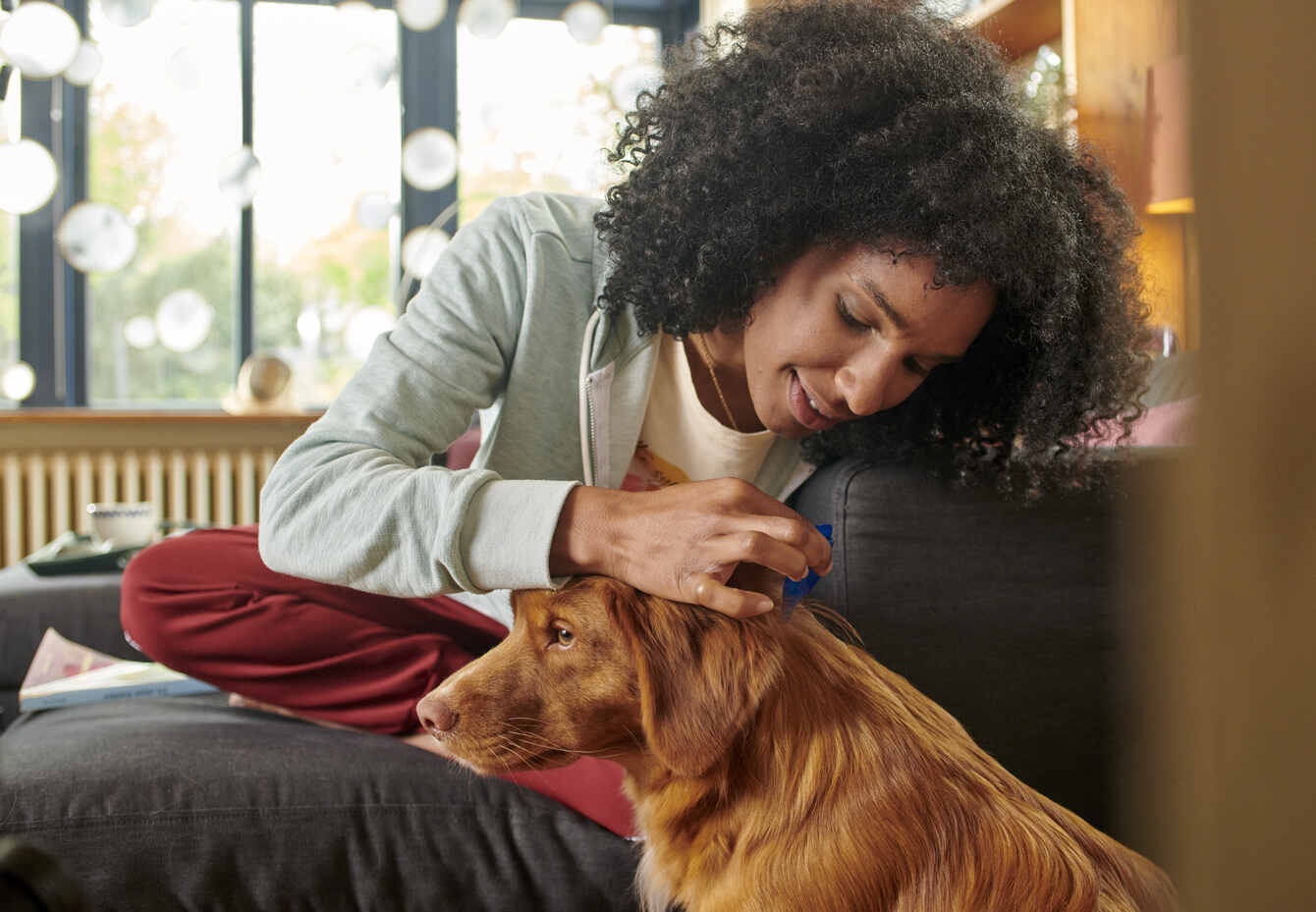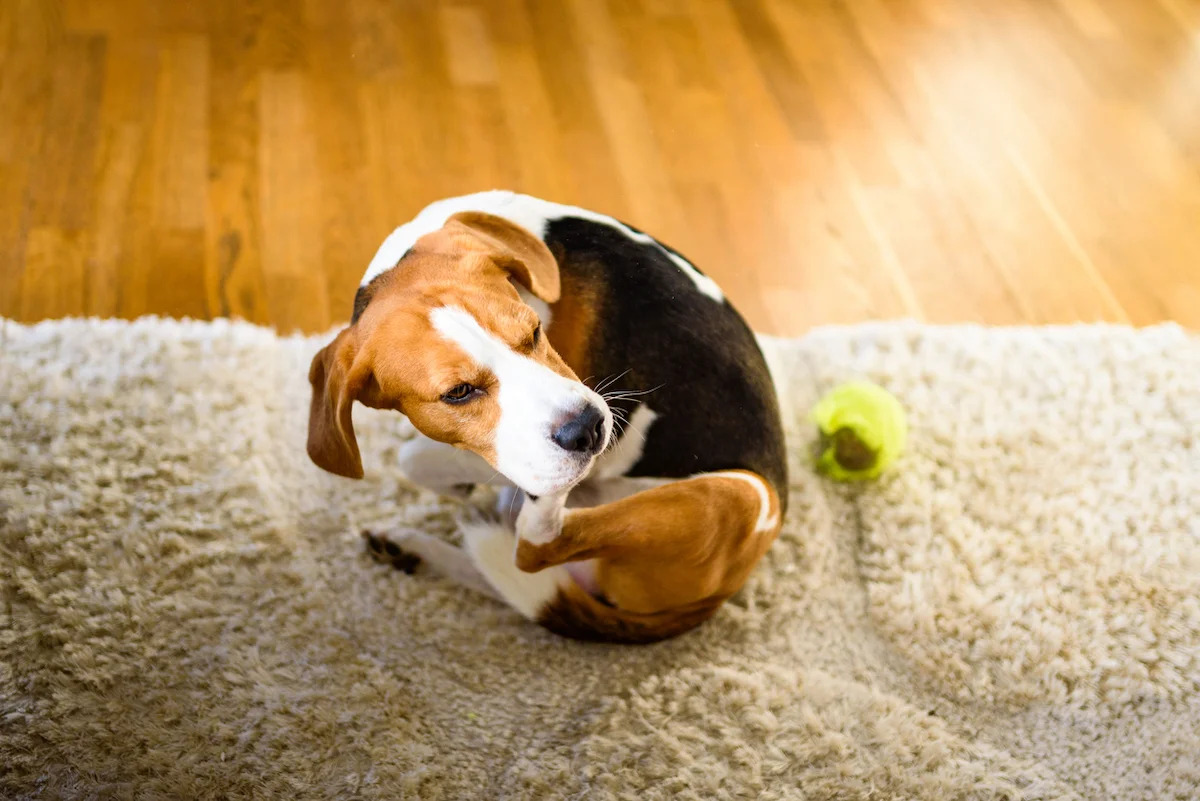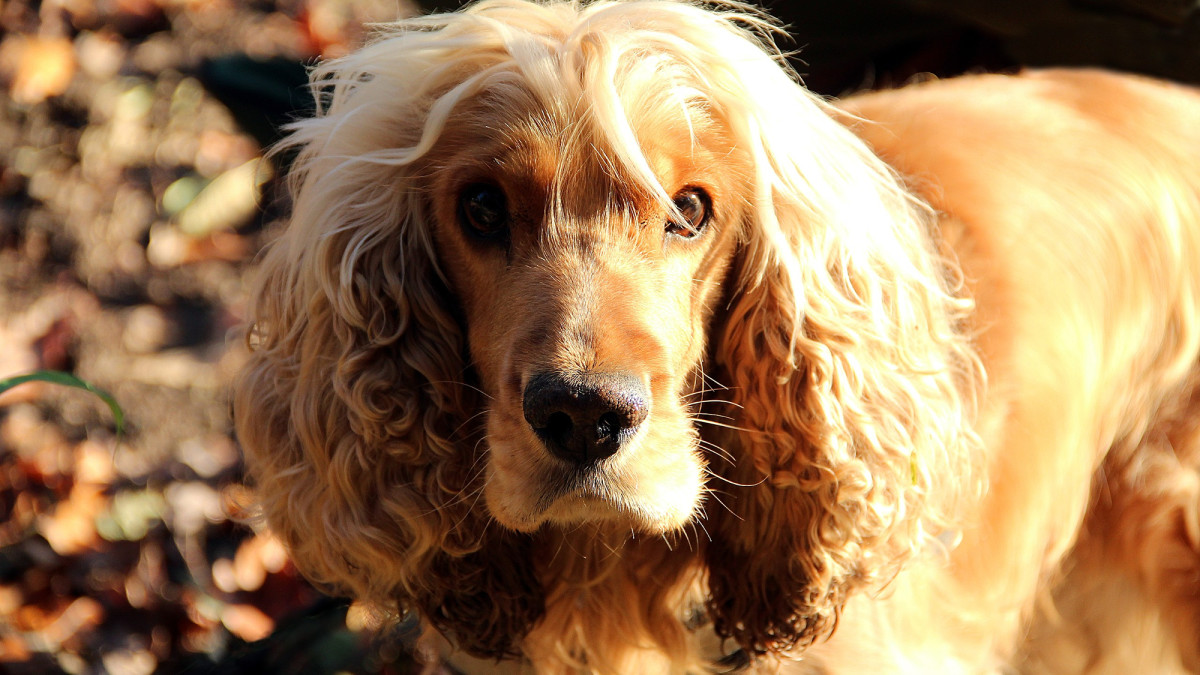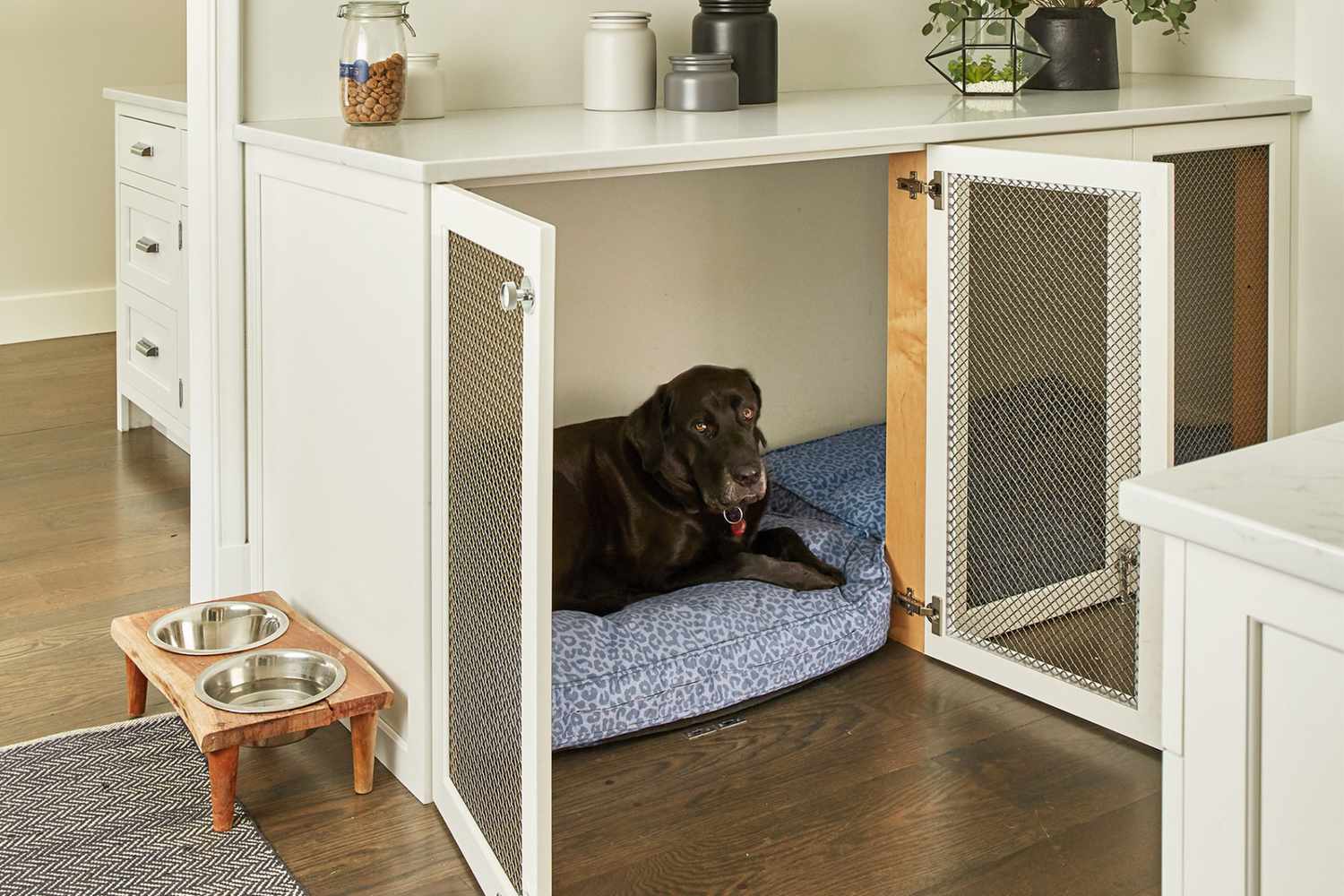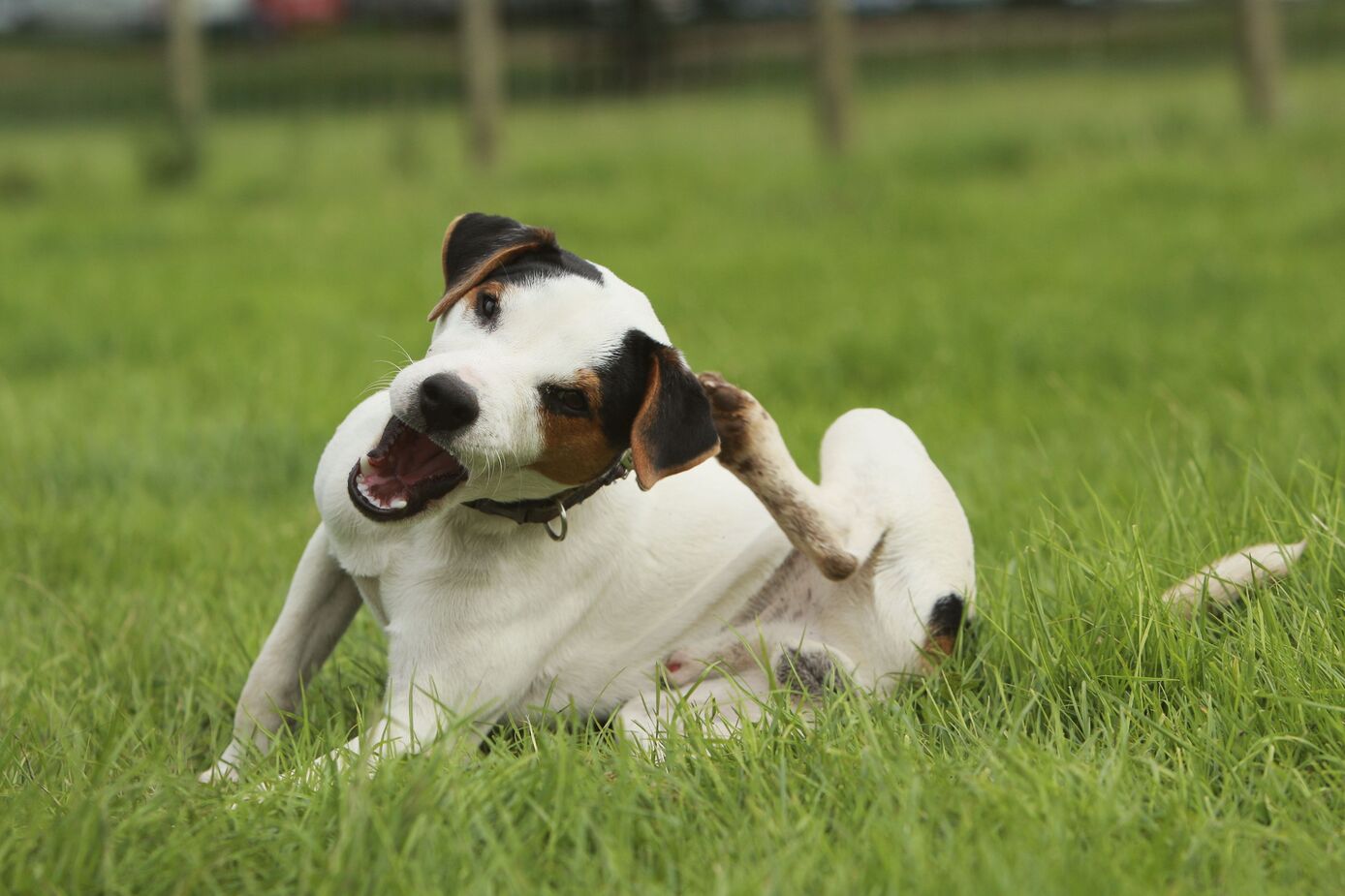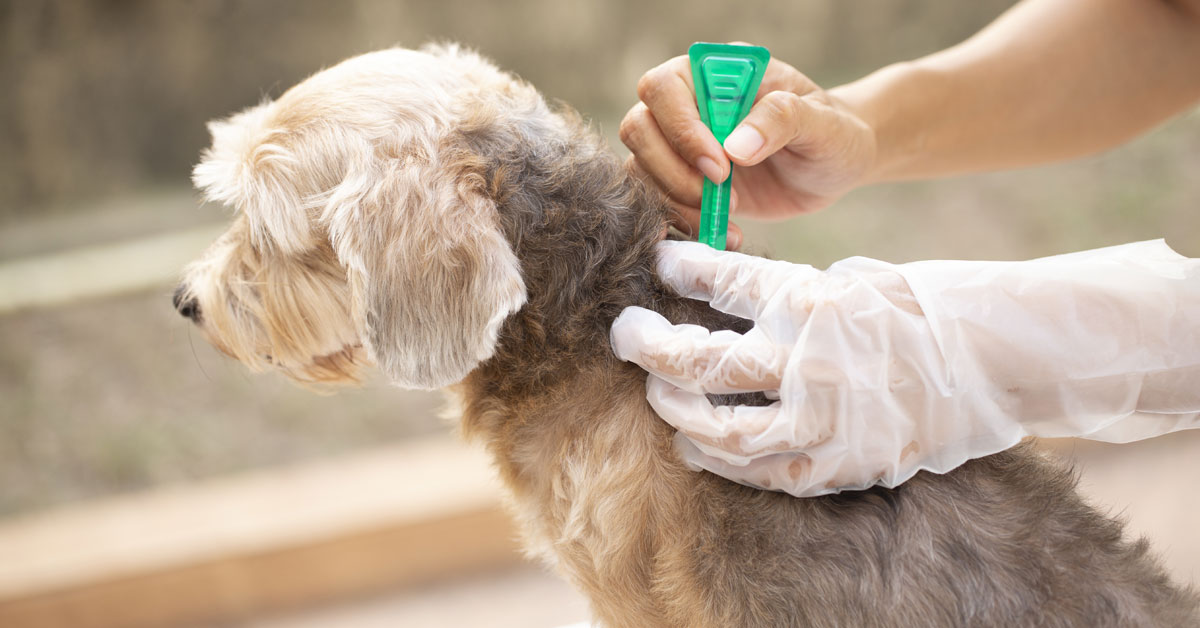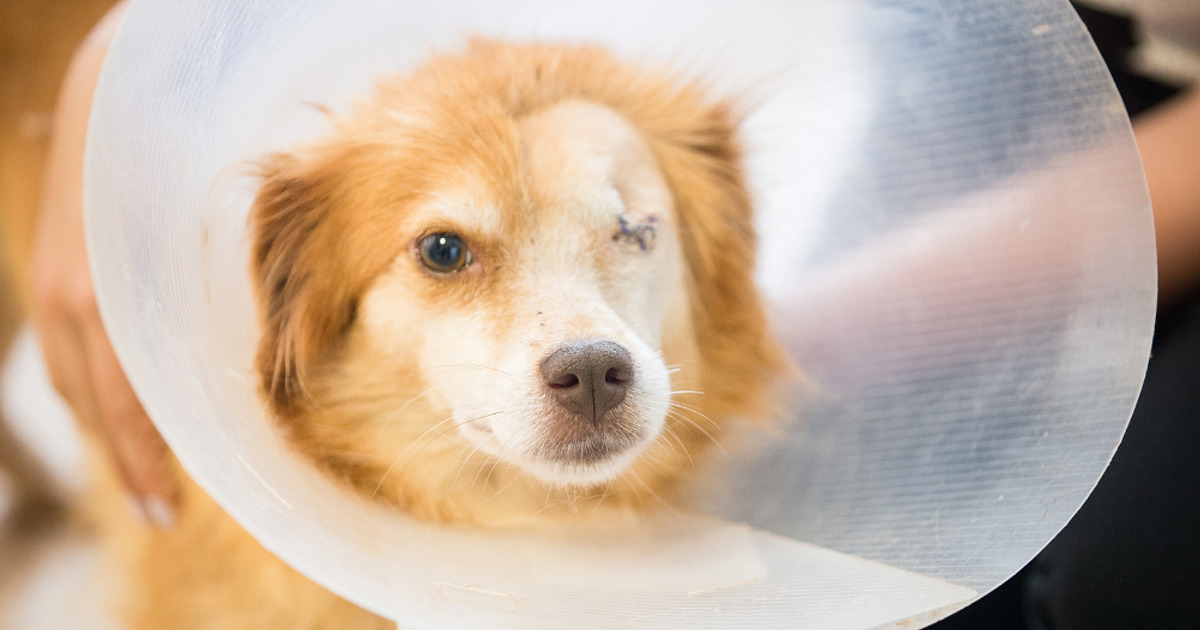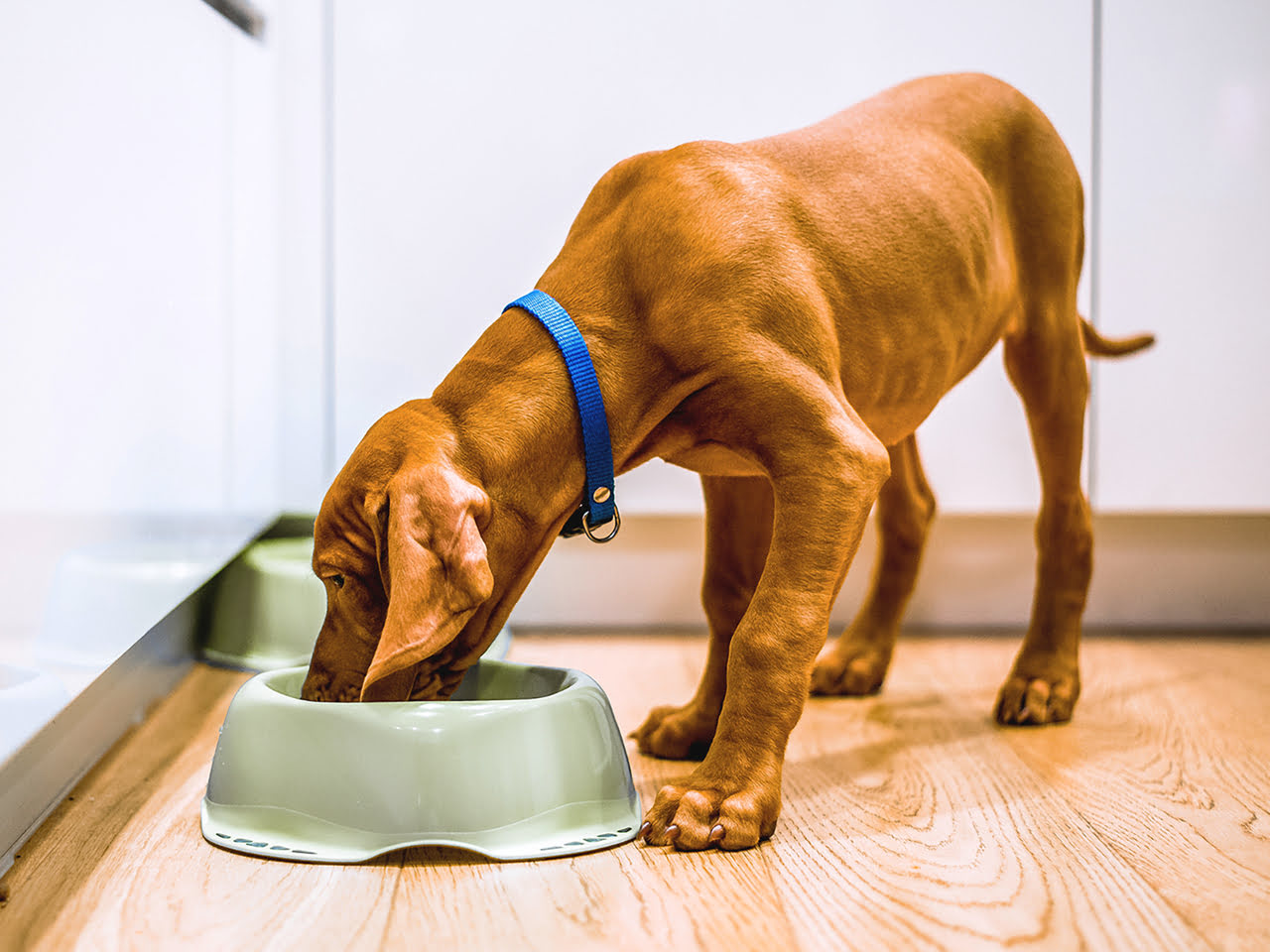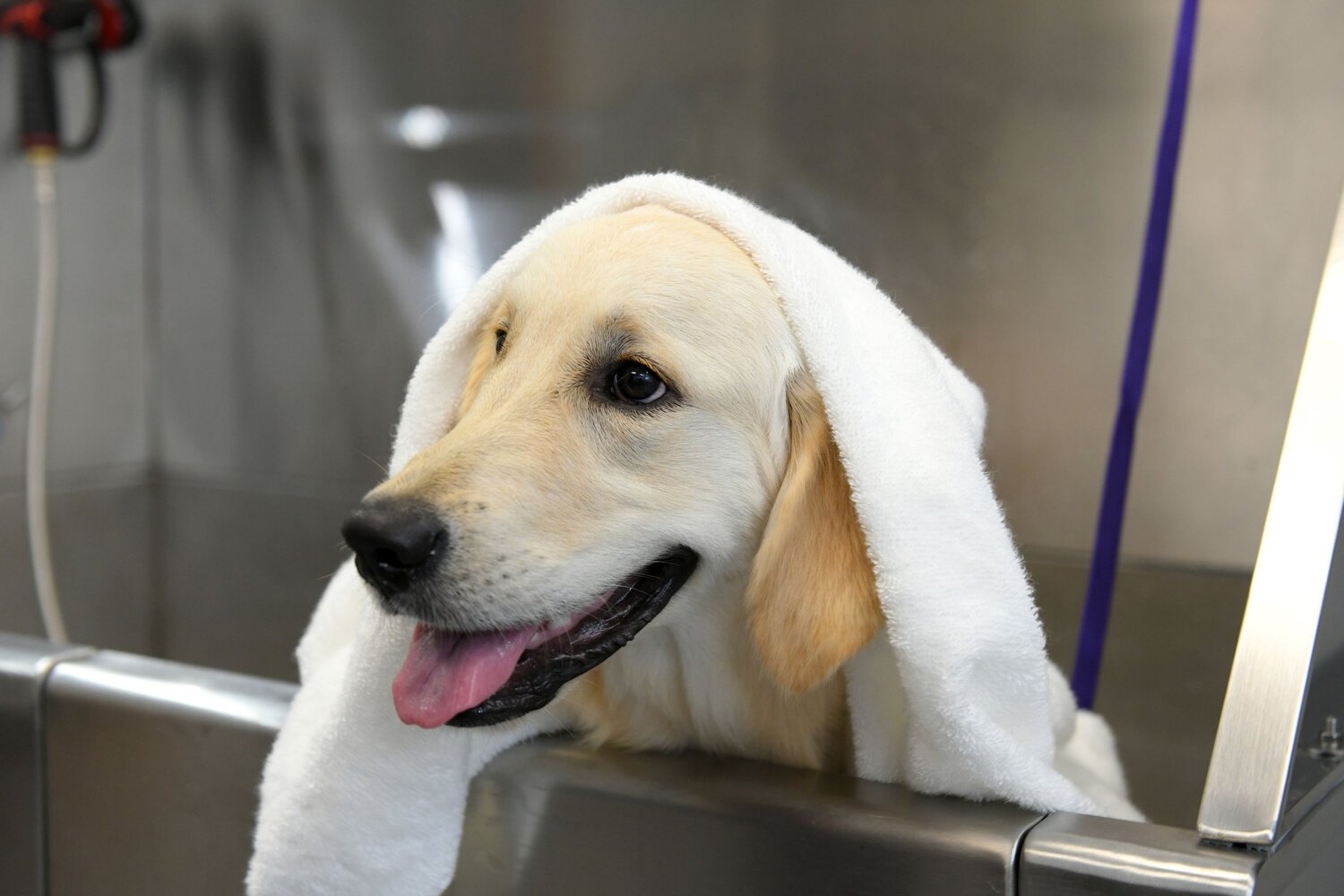Home>Health & Wellness>Common Health Issues>How Long Does It Take To Get Rid Of Fleas On Your Dog


Common Health Issues
How Long Does It Take To Get Rid Of Fleas On Your Dog
Modified: February 21, 2024
Learn about common health issues for dogs, including how long it takes to get rid of fleas. Discover effective solutions and tips for a healthy, happy pet.
(Many of the links in this article redirect to a specific reviewed product. Your purchase of these products through affiliate links helps to generate commission for Pawsomeoldies.com, at no extra cost. Learn more)
Table of Contents
Introduction
Dealing with a flea infestation on your dog can be a frustrating and challenging experience. These tiny, blood-sucking pests not only cause discomfort to your furry friend but can also infest your home if left unchecked. As a responsible pet owner, it's crucial to understand the flea life cycle, effective methods for getting rid of fleas, and the timeline for seeing results.
Fleas are more than just a nuisance; they can pose serious health risks to your dog. From skin irritation and allergic reactions to the transmission of diseases, such as tapeworms and Bartonella, these parasites can significantly impact your pet's well-being. Therefore, taking proactive measures to eliminate fleas and prevent future infestations is paramount.
In this comprehensive guide, we will delve into the intricacies of the flea life cycle, explore various methods for eradicating fleas from your dog, and provide insights into the timeline for witnessing tangible results. Additionally, we will share valuable tips for preventing future flea infestations, empowering you to safeguard your dog's health and well-being.
By gaining a deeper understanding of the flea life cycle and effective flea control methods, you will be better equipped to tackle this common health issue and ensure a comfortable, flea-free environment for your beloved canine companion. Let's embark on this enlightening journey to equip you with the knowledge and strategies needed to combat fleas and provide your dog with the care and protection they deserve.
Read more: If Your House Is Infested With Fleas On Two Dogs, How Long Does It Take For Capstar To Work?
Understanding the flea life cycle
To effectively combat fleas and prevent future infestations, it's essential to comprehend the intricate life cycle of these resilient parasites. The flea life cycle consists of four stages: egg, larva, pupa, and adult. Understanding each stage is crucial in devising a comprehensive approach to flea control.
-
Egg Stage: The life cycle begins when an adult female flea lays eggs on the host animal, which can amount to hundreds of eggs within a short period. These tiny, white eggs are not attached to the host and can easily fall off onto carpets, bedding, or outdoor areas where the pet roams.
-
Larva Stage: Once the eggs hatch, they give rise to larvae that are approximately 1.5-5.2mm long. These worm-like larvae are not equipped with legs but are adept at seeking out dark, humid environments, such as the crevices of carpets, upholstery, or soil. Here, they feed on organic debris and flea feces for sustenance.
-
Pupa Stage: The larvae then spin cocoons and enter the pupa stage, where they undergo metamorphosis. The pupae are encased in a protective cocoon, making them resilient to insecticides and environmental factors. Fleas in the pupal stage can remain dormant for weeks or even months, awaiting favorable conditions to emerge as adults.
-
Adult Stage: Once the pupae sense vibrations, heat, or carbon dioxide, indicating the presence of a potential host, they emerge as adult fleas. These blood-feeding parasites seek out a host to feed on and begin the cycle anew by laying eggs.
Understanding the flea life cycle is pivotal in formulating an effective eradication strategy. Since different products target specific stages of the life cycle, a multi-faceted approach is often necessary to address eggs, larvae, pupae, and adult fleas. By disrupting the life cycle at multiple points, it becomes possible to achieve comprehensive flea control and prevent reinfestation.
By gaining insight into the complexities of the flea life cycle, pet owners can make informed decisions regarding flea control products, environmental management, and preventive measures. Armed with this knowledge, you are better equipped to tackle flea infestations and provide your dog with a comfortable, flea-free environment.
Methods for getting rid of fleas on your dog
When it comes to eliminating fleas from your dog, employing a multi-faceted approach is key to achieving optimal results. Here are several effective methods for getting rid of fleas on your canine companion:
-
Topical Flea Treatments: Topical flea treatments, commonly known as spot-on treatments, are applied directly to your dog's skin, typically between the shoulder blades. These treatments contain active ingredients that target adult fleas, disrupting their life cycle and preventing reinfestation. They are easy to apply and provide long-lasting protection, making them a popular choice for pet owners.
-
Oral Flea Medications: Oral flea medications come in the form of chewable tablets or flavored treats that are administered to your dog. These medications work systemically, meaning they circulate in the bloodstream and kill fleas when they feed on your pet. Some oral flea medications also inhibit flea egg production, contributing to comprehensive flea control.
-
Flea Collars: Flea collars are infused with insecticidal ingredients that repel and kill fleas. When fitted snugly around your dog's neck, these collars release active ingredients that disperse across the skin and coat, providing continuous protection against fleas. Additionally, some flea collars target multiple life stages of fleas, offering comprehensive control.
-
Flea Shampoos and Dips: Flea shampoos and dips are effective for quickly reducing the number of adult fleas on your dog. These products contain insecticidal ingredients that kill fleas on contact. While they provide immediate relief, they may not offer long-term protection against reinfestation and should be complemented with other preventive measures.
-
Environmental Treatments: Since fleas can infest indoor and outdoor environments, it's crucial to address potential breeding grounds. Vacuuming carpets, washing bedding in hot water, and using environmental sprays or foggers can help eliminate flea eggs, larvae, and pupae from your home. Outdoor areas frequented by your dog should also be treated to prevent reinfestation.
-
Regular Grooming and Cleaning: Regular grooming, including brushing and combing your dog's coat, can help remove adult fleas and their eggs. Additionally, maintaining a clean living environment for your pet, including regular washing of bedding and upholstery, can contribute to flea control.
By combining these methods and customizing a flea control regimen tailored to your dog's specific needs, you can effectively eradicate fleas and create a comfortable, flea-free environment for your beloved pet. It's important to consult with your veterinarian to determine the most suitable flea control products and develop a comprehensive strategy for combating fleas on your dog.
How long it takes to see results
The timeline for witnessing tangible results in the battle against fleas on your dog can vary depending on the chosen flea control methods and the severity of the infestation. Understanding the factors that influence the speed of results is crucial for managing expectations and implementing an effective flea control strategy.
When using topical flea treatments or oral medications, it's common to observe a reduction in flea activity within the first 24-48 hours after application. These products work swiftly to kill adult fleas on your dog, providing immediate relief from itching and discomfort. However, it's important to note that while adult fleas are targeted, the eggs, larvae, and pupae in the environment may still pose a threat of reinfestation.
Flea collars, designed to provide continuous protection, may take a few days to a few weeks to reach their full effectiveness. The active ingredients in flea collars gradually disperse across your dog's skin and coat, creating a shield against fleas. Over time, the collar's efficacy increases, offering prolonged defense against fleas and preventing new infestations.
For flea shampoos and dips, the results are typically immediate, with a noticeable reduction in adult fleas on your dog following the treatment. However, these products may not provide long-term protection against reinfestation and should be complemented with additional preventive measures to address eggs, larvae, and pupae in the environment.
Environmental treatments, such as vacuuming, washing bedding, and using household sprays, play a crucial role in eradicating flea populations in your home. While these measures can significantly reduce the environmental reservoir of fleas, it may take several weeks to completely break the flea life cycle and eliminate any remaining pupae that are waiting to emerge as adults. Consistency in environmental management is key to achieving lasting results.
In summary, the timeline for seeing results in the fight against fleas on your dog varies based on the chosen flea control methods and the comprehensive approach taken to address the entire flea life cycle. While immediate relief can be achieved through certain treatments, a multi-faceted strategy is essential for long-term success in eliminating fleas and preventing reinfestation. By staying proactive and persistent in your flea control efforts, you can create a comfortable and flea-free environment for your beloved canine companion.
Tips for preventing future flea infestations
Preventing future flea infestations is a crucial aspect of maintaining a healthy and comfortable environment for your dog. By implementing proactive measures and incorporating preventive strategies into your pet care routine, you can significantly reduce the risk of flea infestations and safeguard your dog's well-being. Here are valuable tips for preventing future flea infestations:
-
Regular Flea Prevention: Consistency is key when it comes to flea prevention. Utilize veterinarian-recommended flea prevention products, such as topical treatments, oral medications, or flea collars, according to the prescribed schedule. By adhering to a regular preventive regimen, you can create a protective shield against fleas and minimize the likelihood of infestations.
-
Environmental Management: Maintain a clean and hygienic living environment for your dog. Regularly vacuum carpets, rugs, and upholstery, paying special attention to areas where your pet spends time. Washing your dog's bedding in hot water and using pet-safe household sprays can help eliminate flea eggs, larvae, and pupae from your home, reducing the risk of reinfestation.
-
Outdoor Flea Control: Pay attention to outdoor areas frequented by your dog. Keep your yard well-maintained by mowing the lawn, trimming shrubs, and removing debris where fleas and their hosts may thrive. Consider using pet-safe outdoor flea control products to create a barrier against fleas in your outdoor space.
-
Regular Grooming: Incorporate regular grooming sessions into your pet care routine. Brushing and combing your dog's coat not only help in removing loose fur and debris but also enable you to detect any signs of flea activity early on. Additionally, maintaining your dog's coat in good condition can contribute to overall skin health, making it less hospitable for fleas.
-
Year-Round Vigilance: Fleas can be active year-round, especially in temperate climates or indoor environments with central heating. Therefore, it's important to remain vigilant and proactive in flea prevention regardless of the season. Consistent preventive measures throughout the year can effectively deter fleas from infesting your dog and your home.
-
Regular Veterinary Check-ups: Schedule regular veterinary check-ups for your dog to monitor their overall health and discuss flea prevention strategies. Your veterinarian can provide tailored recommendations based on your dog's specific needs, ensuring that you are equipped with the most effective flea control products and preventive measures.
By integrating these preventive tips into your pet care routine, you can create a resilient defense against fleas and minimize the risk of future infestations. Proactive flea prevention not only ensures your dog's comfort and well-being but also contributes to a harmonious and flea-free living environment for both you and your beloved canine companion.
Conclusion
In conclusion, combating fleas on your dog requires a comprehensive understanding of the flea life cycle, effective eradication methods, and proactive preventive measures. By gaining insight into the intricacies of the flea life cycle, pet owners can tailor their approach to flea control, addressing each stage of the life cycle to achieve lasting results. Understanding the timeline for witnessing tangible results is crucial for managing expectations and staying proactive in flea control efforts.
Effective methods for getting rid of fleas on your dog, such as topical treatments, oral medications, flea collars, shampoos, and environmental treatments, offer diverse approaches to flea control, each with its unique benefits and considerations. By customizing a flea control regimen that aligns with your dog's specific needs and the severity of the infestation, you can effectively eliminate fleas and create a comfortable, flea-free environment for your beloved pet.
Furthermore, preventing future flea infestations is a proactive and essential aspect of responsible pet ownership. By incorporating regular flea prevention, environmental management, outdoor flea control, grooming, and year-round vigilance, pet owners can significantly reduce the risk of flea infestations and safeguard their dog's well-being. Consistency in preventive measures and regular veterinary guidance play a pivotal role in creating a resilient defense against fleas and maintaining a harmonious living environment for both pets and their owners.
In essence, the battle against fleas on your dog demands a multi-faceted approach, combining knowledge, proactive measures, and effective products to achieve comprehensive flea control. By staying informed, proactive, and consistent in flea prevention and eradication efforts, pet owners can provide their dogs with a comfortable, flea-free environment, promoting their overall health and well-being. With the right strategies and a commitment to proactive flea control, pet owners can ensure that their beloved canine companions enjoy a life free from the discomfort and health risks associated with flea infestations.
